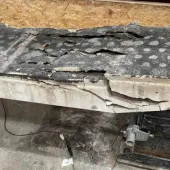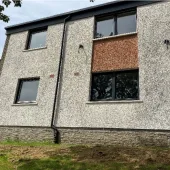University of Sussex to replace unsafe RAAC panels
University of Sussex Plans RAAC Panel Replacement After Safety Concerns
The University of Sussex (UoS) has submitted a planning application to remove reinforced autoclaved aerated concrete (RAAC) panels from its Grade II* listed Arts A building after a structural assessment found them to be at "critical risk of brittle failure."
The application, validated by Brighton and Hove City Council on 6 February, follows an inspection by structural engineers Arup. Their report identified significant deterioration, including water staining, fungal growth, and water ingress, which have compromised the structural integrity of the panels located in an office, a corridor, and a balcony. A survey in April 2024 revealed additional localised failures.
"The panels have exceeded their viable lifespan and pose a risk of brittle failure when traversed," the report states. As a precaution, Office A172—one of the affected areas—has been taken out of use.
The university proposes replacing the RAAC panels with new timber floor construction to match existing levels and installing new zinc roofing to prevent further water ingress. While these changes will alter the original construction, they are deemed necessary to ensure safety.
The Arts A building, designed by Sir Basil Spence and constructed between 1962 and 1966, is one of many mid-20th-century structures affected by RAAC deterioration. Used extensively in UK construction from the 1950s to the 1990s, RAAC was a cost-effective alternative to traditional concrete but has a lifespan of roughly 30 years. Its deterioration has led to a national review of public buildings, particularly schools and universities.
The issue gained national attention in 2023 when several schools were forced to close due to unsafe RAAC panels. A Department for Education (DfE) report in 2021 upgraded the risk level for buildings with ageing RAAC to "critical – very likely" to collapse. By February 2024, the government had identified 234 schools with RAAC, with mitigation measures such as temporary classrooms being used in many cases.
The UoS’s planned works reflect a broader trend of necessary intervention in buildings constructed during the post-war period. As concerns over RAAC continue, further assessments and remedial works across the UK’s education and public building sectors are expected.







